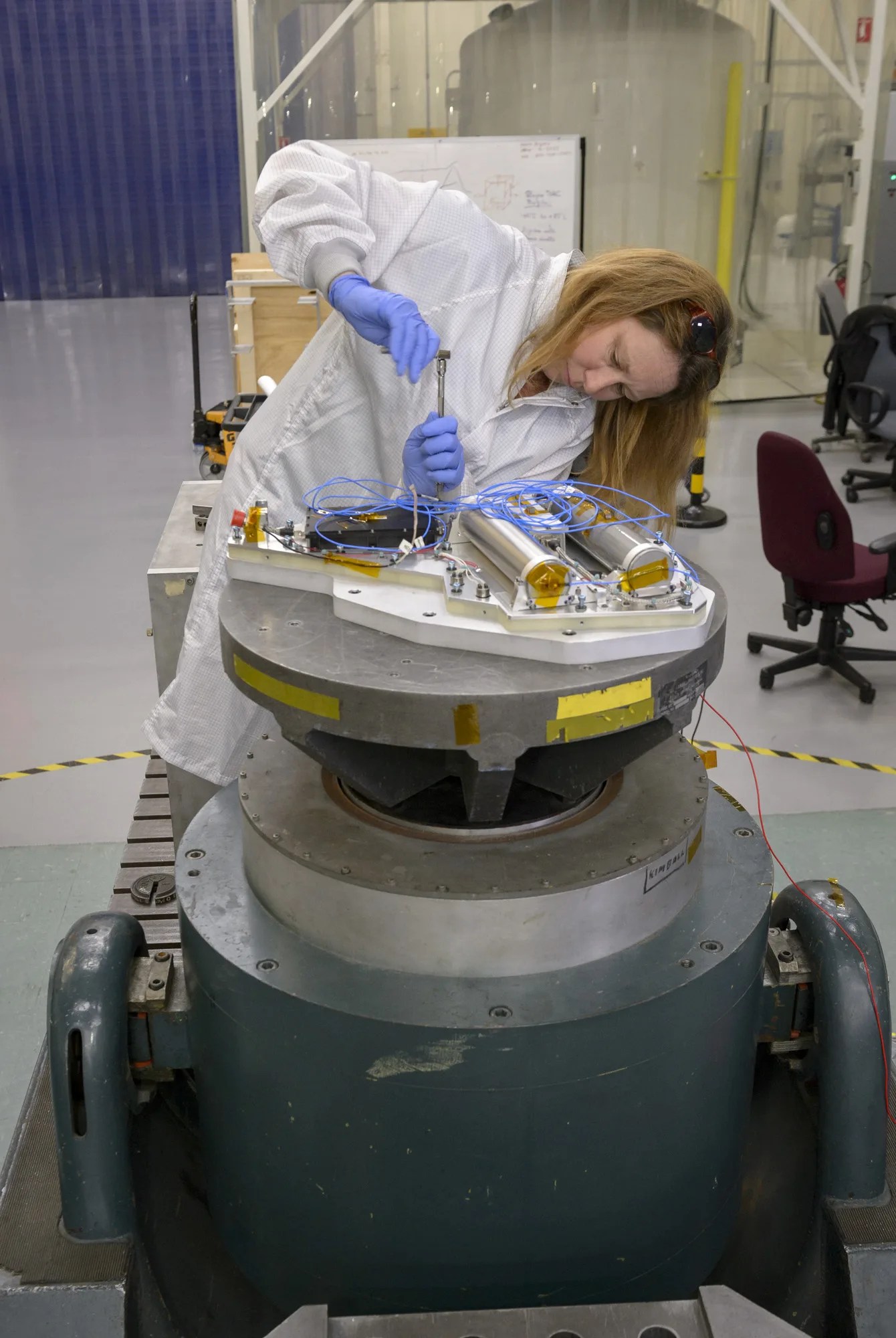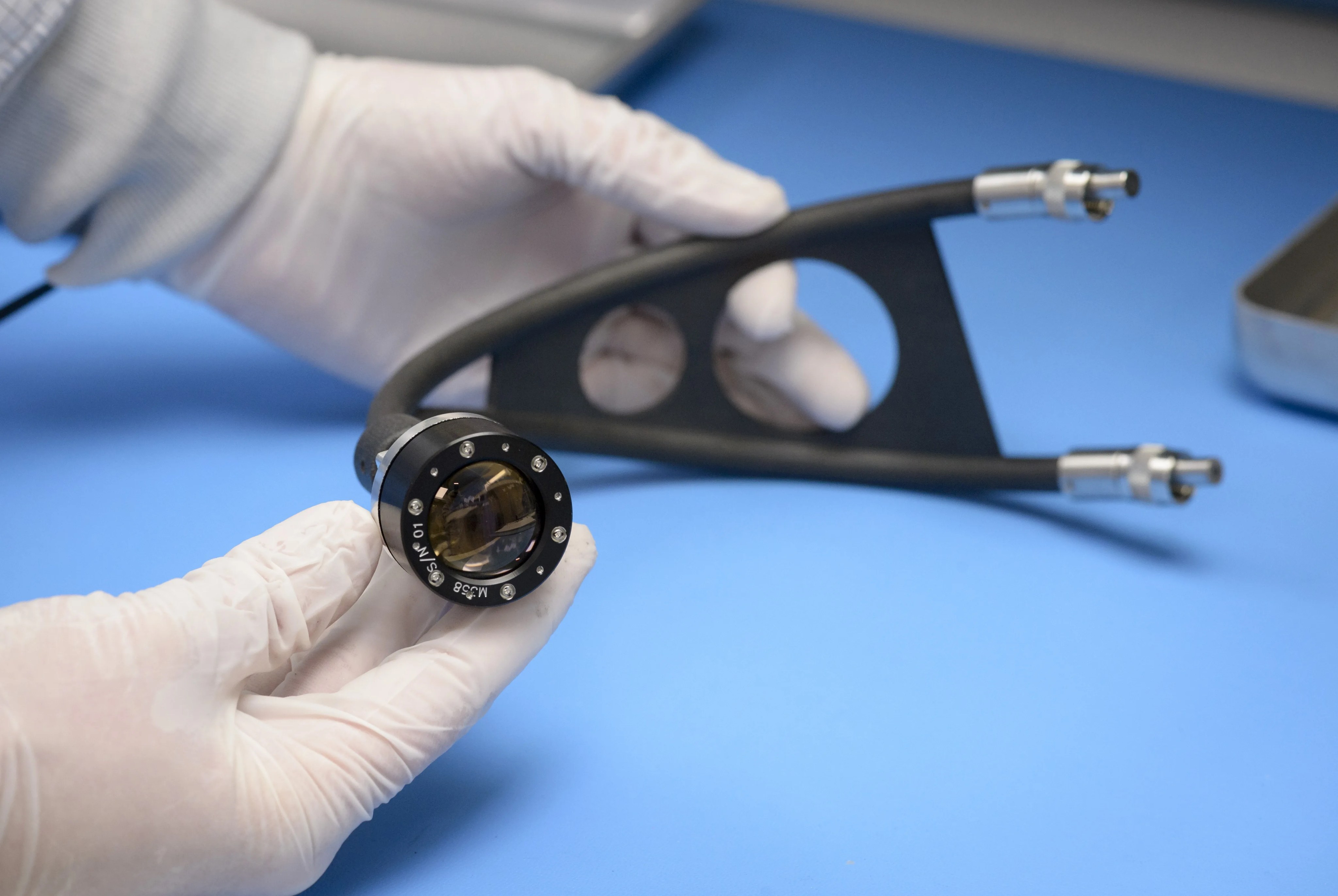VIPER
Rover and Instruments
The Rover and Its Onboard Toolkit
About the size of a golf cart, NASA's Volatiles Investigating Polar Exploration Rover, or VIPER, is ideal for traversing the Moon's South Pole. Through extensive testing on prototype units here on Earth, NASA teams have come up with the right solutions for operating NASA's first lunar mobile robot on the surface of the Moon.
To access the most promising ice reserves, VIPER must maneuver a highly cratered surface with soils of varying levels of compaction. The rover's components are rugged enough to withstand the encroachment of lunar dust, blasts of cosmic rays and dramatic swings in lighting and temperature. With its onboard suite of instruments to find out what lurks below the lunar surface, VIPER will help inform our understanding of how to live achieve a long-term presence on the lunar surface.
The Rover: Key Features
Measuring 8 feet (2.5 meters) tall and 5 feet (1.5 meters) in length and width, this mid-sized rover is built for crawling around craters. Pioneering a new kind of wheel motion, NASA engineered the rover to be agile enough to move through a variety of inclines and soil types – from compacted to fluffy – without getting stuck.
During normal operations, the rover will roll across the surface. Should it encounter extremely fluffy soil, VIPER can lift each of its wheels independently, almost like feet, and use them to dig into and sweep along the surface. This gives it a swimming-like motion capable of pulling the rover out of even very soft soils.
Capable of traversing an incline of as much as 15 degrees, the rover’s four wheel modules are designed with both an active suspension and independent steering. This means VIPER can drive sideways or diagonally and even spin in a circle. VIPER can move in any direction without changing the way it’s facing, so its science objectives and solar-panel charging can be optimized.
Generally, VIPER will drive at about 0.45 mph (0.72 kph) over the lunar surface, slowing to 0.25 mph (0.4 kph) when prospecting for water and other potential resources. VIPER will explore inside dark craters where the Sun never reaches. VIPER is NASA's first rover with headlights – a system specially designed to work with its cameras in the Moon’s extreme conditions of light and dark.
VIPER's camera system will allow operators on Earth to visualize the terrain the rover needs to navigate and send commands in near-real time based on what they see – where and how fast to move, and where to stop and search for water ice. Typically, the operators will tell the rover to move about 15 feet (4.5 meters), before downlinking data and reassessing. VIPER will send its science and prospecting data back using an X-band communications system that connects directly with Earth over the Deep Space Network.
The onboard computer is the brain of the rover that will help VIPER do its job. It includes software for running commands sent from Earth, processing data from VIPER’s sensors, operating its instruments and driving. Since the Moon is much closer to Earth than Mars, there will be little delay when communicating with VIPER, allowing some of the rover’s functions to be performed here on Earth, such as creating maps of the rover’s environment to track its position and mapping the resources it finds.
The VIPER mission will maximize its capabilities by taking advantage of commercially available hardware and open-source robotics software, including elements of its onboard science toolkit. Using a set of scientific instruments and a drill, the rover will detect promising areas where ice may be found, drill for soil samples and analyze them for potentially accessible resources, including water.

VIPER’s Drill and Science Instruments
VIPER’s instruments all use spectrometers – scientific tools that look at light emitted or absorbed by materials to help identify their composition. They work together to accomplish the mission’s goals of prospecting for resources like ice on the Moon.
NSS: Neutron Spectrometer System
As the rover drives across the lunar surface, VIPER will use the Neutron Spectrometer System, or NSS, to indirectly detect potential water present in the soil, up to 3 feet below the surface, for further investigation. Where there is water, there must be hydrogen, since that element provides the H in H2O. The NSS works by measuring changes in the number and energy of particles called neutrons that are always emanating from the Moon. When these tiny particles strike something that’s about their size – like a hydrogen atom – they lose a lot of their energy. That’s a change that NSS, developed by NASA’s Ames Research Center in California’s Silicon Valley, can detect and use to infer the presence of hydrogen.
TRIDENT: The Regolith and Ice Drill for Exploring New Terrains
Where NSS finds a promising concentration of hydrogen underground – potentially ice – the rover will deploy its 3.28-foot (1-meter) drill. The Regolith and Ice Drill for Exploring New Terrains, or TRIDENT, will dig up soil cuttings from as much as 3 feet below the lunar surface. Developed by Honeybee Robotics in Altadena, California, TRIDENT is a rotary percussive drill – meaning it both spins to cut into the ground and hammers to fragment hard material for more energy-efficient drilling.
The drill bit at the tip of the long drill string has carbide cutting teeth. These are harder than steel to maintain their sharpness and are similar to what you see on precision drilling or cutting equipment on Earth. The drill tip also carries a temperature sensor to take readings below the surface. Along the length of the drill string are those spiraling features familiar to any power drill user, called flutes. When TRIDENT is spinning, the flutes transport the drill cuttings up to the surface. A rotating brush sweeps the soil sample off the drill and into a chute, forming a neat pile on the ground where VIPER’s next set of instruments can analyze it.
NIRVSS: Near-Infrared Volatiles Spectrometer System
Once the TRIDENT drill surfaces soil cuttings, it’s time for the Near-Infrared Volatiles Spectrometer System to investigate. NIRVSS (pronounced “nervous”) is able to tell the nature of the hydrogen in the lunar soil initially detected by the NSS instrument. That hydrogen could belong to water molecules, a close molecular cousin--hydroxyl, or it could exist simply as hydrogen atoms. Any of these forms, however, could be a useful resource for tasks like making rocket fuel. NIRVSS will use its spectrometer to differentiate between water and hydroxyl and to detect the different types of minerals and ices that might be present in the lunar soil – including frozen carbon dioxide, ammonia and methane.
Two other tools attached to the NIRVSS instrument will reveal the precise characteristics of the locations it studies. The Spectrometer Context Imager is like a broad-spectrum camera that yields a seven-color image revealing the composition of the soil in fine resolution. The Longwave Calibration Sensor gives surface temperature at very small scales.

MSolo: Mass Spectrometer Observing Lunar Operations
With a critical role to play as soon as VIPER arrives on the Moon, the Mass Spectrometer Observing Lunar Operations, or MSolo, will assess gases in the environment after touchdown to understand which ones are truly coming from the lunar surface and which are introduced by the lander itself.
Once the rover begins operations, MSolo will work in tandem with NIRVSS to evaluate the drill cuttings for ice and other volatiles – materials that readily evaporate at only moderately warm temperatures. Adapted by NASA’s Kennedy Space Center in Florida to withstand spaceflight and the harsh conditions on the Moon, MSolo is a modified commercial instrument. Typically, it is used in the semiconductor industry to measure gases and detect leaks that could result in manufacturing defects.
Early Test Flights of Instruments to the Moon
All three of VIPER’s instruments will have been battle-tested on the harsh lunar surface before the rover’s actual mission begins. Versions of NSS, NIRVSS and MSolo will have flown as payloads on two earlier deliveries to the Moon by commercial providers under NASA’s Commercial Lunar Payload Services initiative. By studying the instruments’ performance carefully in the very harsh and challenging environment of the Moon, the VIPER team can use that information to even better prepare for their use on the VIPER mission.
